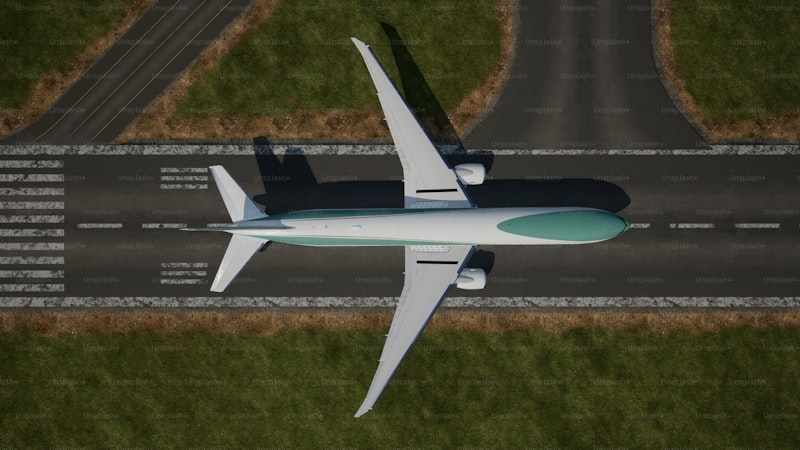Have you ever marveled at the effortless grace with which birds soar through the sky? The flight mechanics of birds are a masterpiece of nature’s engineering. Each wingbeat is a symphony of aerodynamic principles and evolutionary adaptations.
Birds achieve flight through a combination of wing shape, muscle power, and aerodynamic forces. Their wings are designed not only to generate lift but also to control direction and speed. Just like aircraft, birds utilize different wing shapes and sizes depending on their flight style. For instance, raptors like eagles have broad wings for soaring and gliding, while hummingbirds possess smaller wings that beat rapidly for hovering.
The secret lies in their ability to harness the airflow. As birds flap their wings, they create lift by pushing air downwards. This generates an upward force that keeps them aloft. The shape of their wings, with a curved upper surface and flat lower surface, helps create differential air pressure that further enhances lift.
Maneuverability is another key aspect of bird flight. By adjusting the angle and shape of their wings, birds can turn, dive, and hover with astonishing agility. This flexibility allows them to navigate complex environments, evade predators, and capture prey.
Ever wondered how birds manage to migrate thousands of miles each year? Their flight efficiency plays a crucial role. Many birds take advantage of air currents and thermals to minimize energy expenditure during long flights. By riding these invisible highways in the sky, they conserve energy and cover vast distances without exhaustion.
In essence, the flight mechanics of birds are a testament to nature’s ingenuity. From the Arctic tern’s marathon migrations to the peregrine falcon’s high-speed dives, each species has evolved unique adaptations that optimize their flight performance. Next time you spot a bird in flight, take a moment to appreciate the intricate mechanics that allow them to defy gravity and inhabit the skies with such grace.
Unlocking Nature’s Secrets: Exploring the Flight Mechanics of Birds
Have you ever wondered how birds effortlessly soar through the skies, defying gravity with each flap of their wings? The flight of birds is a masterpiece of nature, finely tuned over millions of years of evolution. From the majestic eagle to the agile hummingbird, each species has its own unique way of taking to the air.
At the heart of bird flight lies a complex interplay of aerodynamics, anatomy, and physiology. Unlike airplanes, which rely on engines to generate thrust, birds rely on the power of their muscles to propel themselves forward. The shape and structure of their wings play a crucial role in this process. Wings are not just passive appendages; they are dynamic instruments that birds use to control their flight with remarkable precision.
Take the albatross, for example. Known for its incredible wingspan, this seabird can glide effortlessly for hours without flapping its wings. Its large wings create lift by exploiting air currents over the ocean’s surface, demonstrating nature’s efficiency in flight mechanics.
Birds also exhibit remarkable adaptations for different flight styles. Raptors, such as hawks and falcons, have sharp, curved beaks and talons for hunting on the wing. Their wings are broad and sturdy, allowing them to maneuver swiftly and dive with incredible speed to catch prey.
On the other end of the spectrum are hummingbirds, the acrobats of the bird world. With wings that beat up to 80 times per second, these tiny marvels can hover in mid-air and fly backwards—a feat unmatched by any other bird. Their flight is a testament to the agility and precision that evolution has sculpted over time.
Understanding bird flight mechanics not only deepens our appreciation for these creatures but also inspires technological innovations. Engineers study bird wings to design more efficient drones and aircraft. By unlocking the secrets of nature’s aviators, we open doors to new possibilities in aviation and beyond.
From Wingspan to Wind Patterns: Decoding Bird Flight Mechanics
Have you ever marveled at the effortless grace with which birds soar through the sky? Their flight seems like a dance with the wind, a seamless integration of biology and physics. Understanding how birds achieve flight involves delving into their intricate mechanics, from their wingspan to the subtle nuances of wind patterns.
At the heart of bird flight is their wingspan, a crucial determinant of their aerodynamic capabilities. Birds with longer wingspans generally excel at soaring over long distances, utilizing updrafts and air currents to maintain altitude with minimal effort. This adaptation allows them to conserve energy during migration and hunting.
But it’s not just the wingspan that dictates flight efficiency; it’s also how birds interact with the wind. Different species have evolved unique strategies to harness various wind patterns. For instance, seabirds often utilize sea breezes and thermals rising from the ocean surface to stay aloft for extended periods without flapping their wings excessively.
Wind patterns play a pivotal role in the flight paths birds choose, influencing everything from their migration routes to their foraging behaviors. Understanding these patterns helps ornithologists predict bird movements and even study climate change’s impact on avian populations.
Moreover, the shape and flexibility of bird feathers contribute significantly to their flight dynamics. Feathers are not just for decoration; they play a crucial role in generating lift and reducing drag as birds navigate through the air. This intricate design allows for swift aerial maneuvers and precise control over their flight trajectory.
Decoding bird flight mechanics involves unraveling a complex interplay of wingspan, wind patterns, and feather dynamics. Each aspect contributes uniquely to the marvel of avian flight, showcasing nature’s ingenuity in adapting to the challenges of the sky. As we continue to study and appreciate these mechanisms, we gain deeper insights into the beauty and efficiency of birds in flight.
Aerodynamics in Action: How Birds Navigate the Skies

Birds, those feathered marvels of nature, are not just creatures of beauty but also masters of the sky. Their ability to effortlessly glide through the air is a testament to the intricate science of aerodynamics. But how exactly do these avian acrobats navigate the skies with such grace?
One of the key factors enabling birds to soar is their streamlined body shape and wing structure. Unlike airplanes, birds have flexible wings that can adjust their shape mid-flight. This adaptability allows them to control their speed and maneuver swiftly through varying air currents. Imagine their wings as dynamic airfoils, constantly adjusting to optimize lift and reduce drag.
Moreover, birds make use of thermals—rising columns of warm air—to gain altitude without expending much energy. By circling within these invisible highways, they can ascend to great heights with minimal effort. It’s akin to finding an elevator in the sky, allowing them to conserve energy for long migrations or hunts.
Navigation is another feat where birds excel. Many species possess an innate sense of direction, guided by the Earth’s magnetic field or celestial cues such as the position of the sun and stars. This biological GPS system helps them navigate over vast distances, from seasonal migrations spanning continents to precise return flights to their nests.
Consider the albatross, known for its epic journeys across oceans. With a wingspan stretching over ten feet, it harnesses ocean winds to glide for hours without flapping its wings—a true testament to efficiency in flight. Each movement, each adjustment in its flight path, is a result of millennia of evolution finely tuned to maximize aerodynamic efficiency.
Nature’s Aviators: The Physics Behind Bird Flight
At its core, bird flight is a perfect blend of aerodynamics, anatomy, and physics. Unlike airplanes that rely on engines to generate thrust, birds generate lift through the shape and movement of their wings. Imagine their wings as carefully designed airfoils, similar to the wings of an airplane but with far more flexibility and control.

One of the key principles governing bird flight is Bernoulli’s principle, which states that faster-moving air creates lower pressure. As a bird flaps its wings, it creates a pressure difference between the upper and lower surfaces of its wings. This pressure difference generates lift, allowing the bird to rise and stay aloft.
Moreover, birds are masters of efficiency. They have evolved lightweight yet strong bones, hollow in structure to minimize weight without compromising strength. Their feathers, too, play a crucial role not only in flight but also in maintaining body temperature and navigating through the air currents.
Ever noticed how some birds can effortlessly glide for hours without flapping their wings? This phenomenon is achieved through dynamic soaring and thermals. Dynamic soaring involves using the wind gradient at different altitudes to gain speed and altitude, while thermals are columns of warm air that rise from the earth’s surface, providing upward lift.
In essence, bird flight is a testament to the wonders of natural engineering. From the streamlined shape of their bodies to the synchronized movement of their wings, every aspect is finely tuned to maximize efficiency and minimize energy expenditure. Next time you see a bird soaring high above, take a moment to appreciate the complex interplay of physics and biology that allows them to navigate the skies with such grace and ease.
Wing Design Wonders: Bird Flight Mechanics Revealed
Have you ever marveled at the graceful flight of birds and wondered how they effortlessly soar through the sky? The secret lies in the intricate design of their wings, a marvel of natural engineering that has fascinated scientists and enthusiasts alike for centuries.
Bird wings are not just simple appendages; they are highly evolved structures tailored for efficient flight. Each component, from the primary feathers to the muscles that control them, plays a crucial role in enabling birds to achieve sustained and agile flight. Unlike fixed wings on airplanes, bird wings are flexible and capable of adjusting their shape mid-flight, allowing for precise control and maneuverability.
One of the key features of bird wings is their aerodynamic shape. They are designed to generate lift and reduce drag, enabling birds to defy gravity with minimal effort. The curvature of the wings, combined with the asymmetrical positioning of feathers, creates different pressures above and below the wing surface as air flows over them. This pressure differential generates lift, allowing birds to stay aloft and even glide for long distances without flapping their wings continuously.
Moreover, the structure of bird wings varies greatly among different species, each adapted to suit their specific flight requirements. For instance, the long, narrow wings of falcons and hawks are ideal for high-speed pursuits and agile maneuvers, while the broad, rounded wings of owls enable silent flight for nocturnal hunting.
In essence, the study of bird flight mechanics not only unveils the wonders of natural adaptation but also inspires innovations in human technology, such as the development of more efficient aircraft designs. Understanding how birds achieve flight can provide valuable insights into optimizing aerodynamics and energy efficiency in engineering applications.
This article aims to capture the fascination and complexity of bird flight mechanics while maintaining a conversational and engaging tone, suitable for both enthusiasts and those curious about natural phenomena.
Efficiency in the Air: Bird Flight Adaptations Explored
One of the key adaptations that make bird flight efficient is their lightweight but strong skeleton. Birds have hollow bones filled with air sacs, reducing overall weight without sacrificing structural integrity. This allows them to achieve lift more easily and maneuver swiftly through the sky.
Feathers play a crucial role in flight efficiency as well. Each feather is meticulously designed with a central shaft and interlocking barbs that create a lightweight yet sturdy surface. This structure not only aids in flight but also helps birds regulate their body temperature and repel water during inclement weather.
Another fascinating adaptation is the bird’s respiratory system. Unlike mammals, birds have a highly efficient respiratory system that includes air sacs connected to their lungs. This unique arrangement allows for a continuous flow of oxygenated air, providing the sustained energy needed for long flights without tiring.
The wing shape and arrangement also contribute significantly to flight efficiency. Different bird species have wings adapted for various flight behaviors, whether it’s soaring, gliding, hovering, or rapid flapping. These adaptations are finely tuned to their ecological niche, allowing birds to exploit diverse habitats and food sources.
Frequently Asked Questions
How do birds navigate during migration flights
Learn how birds navigate during migration flights. Discover the fascinating mechanisms they use, including celestial cues like the sun and stars, geomagnetic fields, and even visual landmarks. Understand how these navigation abilities help birds travel thousands of miles with precision.
Why do different bird species have unique flight styles
Explore why different bird species exhibit unique flight styles, shaped by their evolutionary adaptations to environments and behaviors. From soaring raptors to agile hummingbirds, each species’ flight characteristics optimize efficiency and maneuverability for their distinct ecological roles.
How do birds generate lift to stay in the air
Learn how birds generate lift to stay in the air with this concise FAQ. Discover the aerodynamic principles behind bird flight, including wing shape, air pressure differences, and flight techniques.
What role does wing shape play in bird flight performance
Learn how wing shape influences bird flight performance, affecting factors like speed, maneuverability, and energy efficiency.
What adaptations do birds have for efficient flight
Learn about the adaptations that enable birds to achieve efficient flight, including lightweight bones, streamlined bodies, powerful chest muscles, and specialized respiratory systems.


